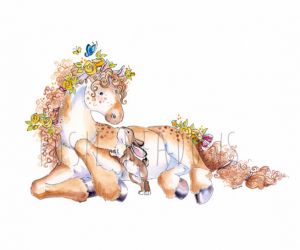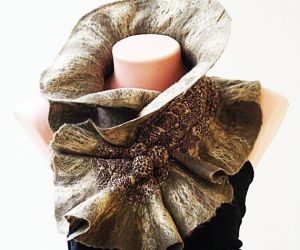
Hyder, 2006, Oil on polyester over panel, artist Tracy Rocca, The Microsoft Art Collection, Building 110, Redmond, Washington, USA. Image by Wonderlane on Flickr.
Guest author Paul Benjamin provides an informative article on preserving and storing art.
Whether you have valuable paintings you purchased from an art exhibit recently or you want to preserve your grandchildrens’ handmade works of art, it is important to know how to properly store these items. Art storage is not just tossing the items in the attic or pushing them behind a bookshelf somewhere, there are very specific methods you need to follow in order to take care of the pieces and to ensure the works of art do not deteriorate, as this is a rather common occurrence. The steps and tips you need to follow for proper art storage are not difficult, but it does ensure your art is left looking the same way the day you obtained it.
Temperature Controlled
For starters, you want to make sure the room you are housing the art in is temperature controlled. Room temperature is adequate, although you would rather have it on the cooler side than on the warmer side. As long as you live in a home where there is adequate heating and cooling systems installed you shouldn’t have much of a problem.
Humidity
If there is one major issue above all others when it comes to art storage it is humidity. Moisture does more damage to paintings, drawings and even sculptures than anything else. To ensure you don’t have any sort of humidity problems where you are storing the art (possibly the basement, side room or attic), you should invest in a quality dehumidifier. This equipment is going to remove the moisture from the room and and keep the art safe from this form of deterioration.
Sunlight
Art storage also requires you to move the art away from the sunlight and other forms of lighting. The oldest known paintings in the entire world are located in caves, not just because it is safe from the elements, but also because of the lack of sunlight. Sunlight fades just about everything, including pigment in paintings, statues and other works of art. If you are not able to keep the art free of a sun or lamp lit room, it is best to place the art in containers to protect it.
Avoid Touching
Never place paintings right against one another. The paint is likely to stick to the rear of the other painting or work of art. When attempting to separate the two paintings it is likely some of the pigment is removed, or even the canvas or other template tears. By separating the items and keeping space between everything you don’t have to worry about this sort of issue at all.
Limit Air Flow
When archeologists exhume a new tomb, as is the case in Egypt around the pyramids and other locations around the world, they take their time, especially when the tomb is completely sealed from the elements. This is because adding oxygen to a room increases the deterioration process, resulting in the art or other artifact breaking down. Although your artwork is not going to instantly deteriorate in front of your eyes, as it has been exposed to air for some time now, there is a reason large displays are put under glass at the museum. Although you don’t have to place all of your material in glass cases, reducing the airflow in the room is a good idea.
When it comes to protecting your art, there are many different methods available to you. Most of these methods do not require a good deal of work and are rather easy to accomplish. All of these steps though protects your valuable investment for yourself and future generations to enjoy.
Paul Benjamin is a District Manager at EZ Storage, a company providing storage solutions for residential and commercial needs since 1971.
Image by Wonderlane on flickr and licensed through Creative Commons.










